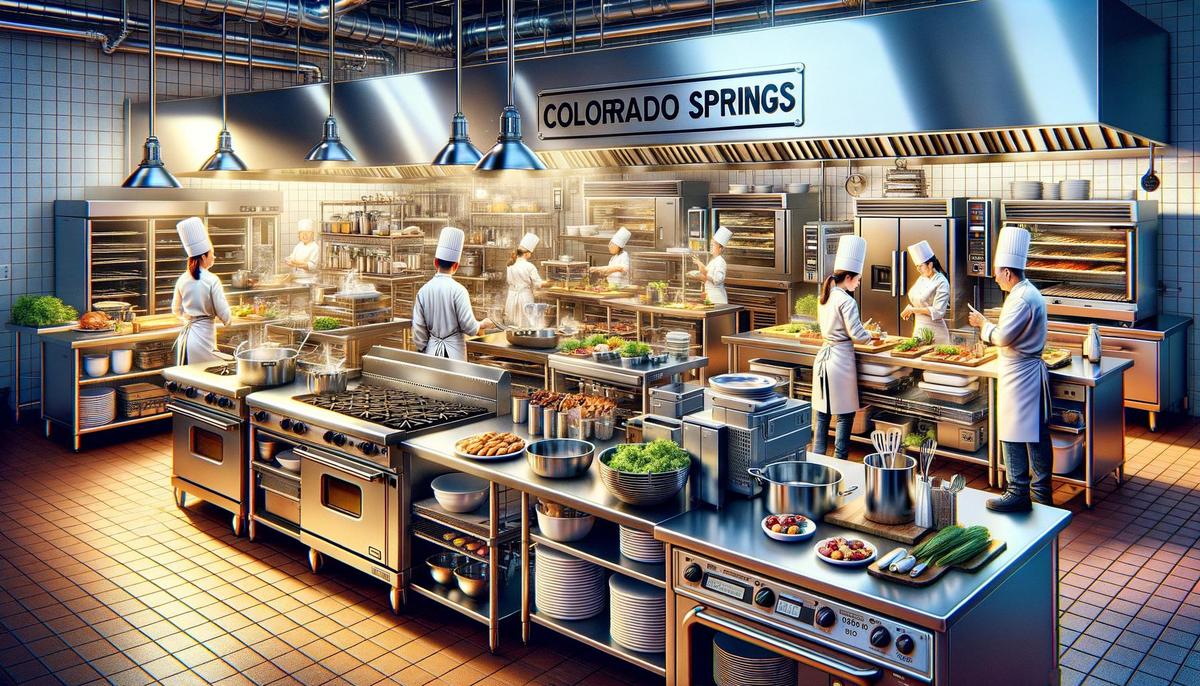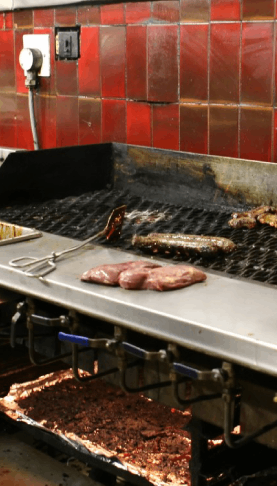They plan, wire, and protect the power behind your kitchen so cooks can cook without thinking about breakers or cords. In short, they make the lights steady, the hoods kick on when they should, and the ovens hold temp without tripping. In Colorado Springs, electrical companies Colorado Springs bring local code knowledge, utility coordination, and real kitchen experience to keep line service smooth during rush. That is the job. It sounds simple. It is not.
What a good electrician actually does for a restaurant kitchen
You see the plate. They see the power path behind it. That path starts at the service, runs through switchgear, panels, and transformers, then into circuits that feed every device you touch. The work covers design, permits, installation, testing, and long term care. You might only notice when something fails. They try to make that never happen.
The goal is predictable power during your busiest 30 minutes of the day. Everything else is support work.
Design that matches your menu, not just a drawing
Your menu drives load. Charbroilers, combi ovens, induction burners, high temp dish machines, blast chillers. Each has a nameplate. The electrician adds it up, applies demand rules, and chooses panel sizes and feeders. It is not copy and paste. A ramen shop, a steakhouse, and a bakery pull power in very different ways.
Good design covers:
- Dedicated circuits for heavy appliances so nuisance trips do not chain-react.
- Balanced loads across phases to keep voltage steady.
- Enough spare capacity for that next fryer you swear you will not add. Until you do.
- Clear labeling so your team can kill power fast if needed.
Permits, code, and local rules
Colorado Springs has its own rhythm. You have Colorado Springs Utilities on the service side. You also have the regional building department for permits and inspections. The electrician coordinates these parts, sets service size, and handles inspections. This avoids delays that can cost a week and a lot of stress.
Local code wins every argument. National code sets the floor, but your inspector makes the final call. Plan for that early.
Installation that survives heat, steam, and cleanup
Kitchens are tough on gear. Steam, hot grease, daily washdowns, carts banging into things. Install choices matter. You want the right conduit, the right box covers, and routing that avoids heat and water. Stainless or PVC-coated in the splash zones. NEMA 4X enclosures in washdown areas. Sealed fittings near dish and prep. Simple choices cut failures.
Testing and sign-off
When the lights come on, real testing starts. Does the hood fire up with the grill? Do make-up air and exhaust fans interlock as designed? Does the suppression system trip power to cooking equipment when it discharges? Are all GFCIs tripping within spec? These checks find the small issues before your first Friday night.
Care after opening
Panels need a torque check. Breakers age. GFCIs fail quietly. A planned maintenance visit twice a year catches problems while they are small. You also get a second chance to label panels after the kitchen moves things around. Kitchens always move things around.
Colorado Springs quirks that change kitchen power
I like dishes that finish the same way every time. Power should be like that, too. Local conditions can mess with that if you ignore them.
- Altitude and dry air can increase static and dust. Filters clog, and fans draw more current when dirty.
- Storms bring lightning and quick outages. Surge protection on the service and panels helps your controls live longer.
- Cold snaps can hit morning startup. Heat tape on roof penetrations and proper heater circuits for makeup air units matter.
- Demand charges on commercial utility bills reward steady use. Staggered startups and smart hood controls can lower peaks.
A surge device costs less than one fried combi oven control board. That is an easy call in Colorado Springs.
Kitchen equipment and the power it actually wants
Here is a quick look at common gear and what the circuit usually looks like. These are typical ranges, not a promise. Always follow the nameplate and the cut sheet.
| Equipment | Typical Voltage | Phase | Approx. Load | Typical Circuit | Notes |
|---|---|---|---|---|---|
| Combi oven (medium) | 208 or 240 V | 3-phase | 12 to 18 kW | 60 to 90 A | Needs water, drain, and GFCI per current rules |
| Electric fryer | 208 or 240 V | 3-phase | 12 to 17 kW | 60 to 80 A | Shunt trip with fire system |
| Induction range (single hob) | 208 or 240 V | 1-phase | 3 to 5 kW | 20 to 30 A | Line noise can bother POS if circuits are shared |
| Walk-in cooler | 208 or 240 V | 1 or 3-phase | 1 to 3 kW | 20 to 30 A | Separate circuit for lights and evap helps service |
| Dish machine, high temp | 208 or 240 V | 3-phase | 12 to 18 kW | 60 to 90 A | GFCI rules depend on location and code cycle |
| Hood exhaust fan | 208 or 480 V | 3-phase | 1 to 5 HP | 20 to 30 A | Interlock with make-up air and gas valves |
| Make-up air unit | 208 or 480 V | 3-phase | 2 to 10 HP | 30 to 60 A | Heat strips can add large load |
| Countertop mixer | 120 V | 1-phase | 500 to 1500 W | 15 to 20 A | Keep on dedicated small appliance circuits |
| Panini press | 120 or 208 V | 1-phase | 1.5 to 3 kW | 15 to 20 A | Common cause of breaker trips if shared |
| Ice machine | 120 or 208 V | 1-phase | 500 to 2000 W | 15 to 20 A | Needs its own circuit for reliability |
I know this looks dry. It matters when you decide to add a second fryer in spring. If the panel is full and feeders are maxed, a simple upgrade turns into a service change and trenching. Plan headroom at the start.
The protection that keeps people safe
Restaurants use water and heat in the same room. That means safety devices are doing real work, not just checking a box.
GFCI and where it goes
In commercial kitchens, GFCI protection is required for many receptacles. Newer code cycles expanded it to cover more voltages and locations. The simple way to say it: if it is in the kitchen and has a plug, your electrician will likely give it GFCI protection unless there is a clear exception. Some equipment makers do not like GFCIs on certain controls. If so, a breaker-type GFCI or a different circuit layout can solve it. Just do not remove protection without a code-backed reason.
Fire suppression interlocks
When your hood system discharges, power to cooking equipment under that hood must cut out. That is done with shunt trip breakers or contactors tied to the suppression control. The hood exhaust keeps running to clear smoke. Make-up air usually stops. These interlocks get tested during final inspection. Keep testing them. Write the steps on a label by the panel.
Emergency stops and quick kills
Big kitchens often add an emergency stop station near the exit of the cook line. One slap and the key circuits drop. Your team needs to know that button. Practice it once in a while. It makes a hot situation calm faster.
Do not let one breaker feed outlets for prep, dish, and line. A single trip should not take the room dark.
Hood controls, make-up air, and comfort
Kitchens feel better when hood systems are tuned. That is not a soft benefit. Good airflow keeps flames steady and pilots lit. It can even reduce breaker trips from motors that struggle.
- Use proper interlocks so fans run when cooking equipment is on.
- Balance supply and exhaust to avoid backdraft that steals pilot flames.
- If you use variable speed fans, add line reactors or filters if controls show noise issues.
If you are opening in winter, ask your electrician to stage heating in the make-up air unit. Staggered heat strips avoid a big current spike at startup.
Lighting that helps prep and keeps staff sharp
Lighting is not just a vibe in the dining room. In the kitchen it is about clear cuts and clean plates.
- Target about 50 foot-candles on prep surfaces.
- Choose LED with high color rendering so steak doneness looks right.
- Seal fixtures over cook lines and dish areas.
- Put lights on separate zones: prep, line, dish, storage. Keep the line bright without blasting the dish room when you do not need it.
And no, flicker is not normal. If LEDs flicker, you may have driver issues, dimmer mismatch, or line noise. A small power conditioner on that circuit or a dimmer swap often fixes it.
Power quality and surge protection
Control boards hate voltage spikes. Colorado storms are rough. Induction cookers and VFD-driven fans can add noise. Plan for this.
- Install a service entrance surge protector.
- Add panel-level surge devices for sensitive zones like the line and office.
- Use isolated circuits for POS, printers, and network gear.
- Grounding and bonding should be clean and tight. Loose bonds cause weird gremlins you cannot trace.
I have watched a POS reboot during lunch because someone plugged a blender into the same circuit. Not a great scene. Split those loads early and label the outlets so staff know what goes where.
Backup power and outage plans
You do not always need a generator. Some places do. Think about what happens if the lights blink during service. What do you want to keep alive?
- Emergency egress lighting is code. That is a given.
- POS and network can ride on a UPS to clean short outages.
- Refrigeration may need generator coverage during long outages, or a clear cold-hold plan to keep product safe.
- Hood exhaust on generator helps if you plan to keep cooking on gas during a power cut.
Generator sizing starts with a list of loads you truly need. Then you add starting currents and decide on an automatic or manual transfer. Small kitchens often do fine with UPS on POS and a plan to pause cooking. High volume or high value product may call for more.
Remodels and retrofits without killing a weekend’s revenue
Remodels cause downtime if you plan them loosely. The better path is staged work at night or on dark days. Temporary power feeds can keep refrigeration live while the main panel gets swapped. Your electrician should lay out a weekend-by-weekend plan if you cannot afford a long closure.
A few lessons from jobs that went smoother than others:
- Pre-label every circuit and outlet before demo. Take photos. Take more photos.
- Stage new panels on a backer board offsite. Pre-land as many circuits as possible.
- Order long-lead gear early. Panels and breakers can be slow to arrive.
- Have the inspector meet on site the morning you plan to re-energize. Waiting a day hurts.
Maintenance that prevents surprise outages
If you run the line hard, your electrical system needs routine checks. Not daily. Not obsessive. Just regular.
| Task | When | What to look for |
|---|---|---|
| Panel inspection and torque check | Every 12 months | Loose lugs, heat marks, mislabeled breakers |
| Infrared scan under load | Every 12 months | Hot spots on breakers and feeders |
| GFCI testing | Every 6 months | Fail-to-trip devices, moisture damage |
| Hood interlock test | Every 6 months | Shunt trip working, fan response correct |
| Outlet and cord check | Quarterly | Cracked faces, loose fits, burned blades |
| Lighting check | Quarterly | Dim or flickering fixtures, dirty lenses |
Keep a simple log. Date, issue, fix, person. When something acts up again, you will know the history. I know logs sound dull. They save money.
How electricians plan the load so trips do not hit at the worst time
Most trips happen during peak. That is when every device runs hot and fans start and stop. Good load planning makes peaks boring. Here is how that looks in practice:
- Dedicated circuits for fryer banks, combis, hot wells, and dish machines.
- Separate small appliance circuits for each prep station.
- Staggered start timers on big fans and heat strips.
- Panel schedules that keep similar heavy loads on different phases.
- Neutral sizing that handles harmonics from LED drivers and electronics.
If a single breaker trips and takes four outlets across the room, the plan was not right. You want one area to go quiet, not the whole cook line.
Cold, heat, steam, and cleaning: choosing the right gear
Kitchens chew up cheap parts. A few material choices change that:
- Use liquid-tight flex near hot equipment so cables do not crack with heat.
- Seal all penetrations in walls and hoods to stop grease from wicking into boxes.
- Pick corrosion-resistant hardware in dish and mop rooms.
- Mount outlets above splash height and away from direct spray paths.
Simple, boring, and very helpful. You will not brag about any of this on Instagram. You will notice when it is missing.
Coordination with your kitchen designer and GC
Power work does not happen alone. The electrician meets with your GC, hood vendor, plumber, and kitchen designer. They share drawings and field measure where things actually land. If a cookline shifts six inches, conduit might block a gas cock or a drain cleanout. That is the stuff that causes last minute rework. Meetings save rework.
Ask for a marked-up equipment list with circuit counts and breaker sizes. Read it line by line. If you plan to swap a tilt skillet for a second combi later, say so now. A small heads-up allows for spare breakers and conduit.
Costs and what drives them up or down
I get asked for a number. There is no single number. There are drivers you can control:
- Service size upgrades and new transformer sets raise cost fast.
- Long runs to roof fans and make-up air add labor.
- Digging for new service or moving panels across the room is expensive.
- Gear lead times can force temporary solutions that cost more.
- Reusing existing circuits is cheaper, but only if they match the new loads safely.
If you want to save without cutting corners, keep the layout tight, pick equipment that matches existing voltages, and give the electrician a final equipment schedule before rough-in. Changing gear after walls close is where money burns.
A simple checklist for owners and chefs
- Do we have a one-line diagram and panel schedules on the wall near the main panel?
- Are all outlets and circuits labeled by station and use?
- Do we test GFCIs and hood interlocks twice a year?
- Are POS and network on clean dedicated circuits with UPS?
- Do we have at least 20 percent spare capacity in key panels?
- Who do we call for 24-hour service, and is that number on the panel door?
What changes if you cook with gas vs electric
Even gas kitchens draw a lot of power. Igniters, controls, hood fans, make-up air, dish, and lighting. You still need strong service and good planning. Full electric kitchens are more predictable. They also spike harder at start and run hotter at the panel. You want heavier feeders, clean terminations, and often a bigger service.
Mixing both fuels is common. Just be honest about where you are going. Many owners start with gas then switch to more electric gear to meet indoor air quality goals. Leave panel space for that shift.
Real problems I see, and quick fixes
Some issues repeat. You can stop them early.
- Flicker on the line during lunch. Often a dimmer mismatch. Use a commercial grade dimmer that matches the LED driver type.
- Random POS reboots. Shared circuit with a blender or induction. Split the circuit and add a UPS.
- Breaker trips on dish machine. Undersized circuit or weak breaker. Check nameplate and upgrade the breaker and wire if needed.
- Grease inside receptacles near the grill. Wrong box type. Replace with sealed cover and move location up and to the side.
- Hood fans not starting with the grill. Broken interlock. Fix the control circuit and label the test steps for staff.
Why local companies matter in Colorado Springs
Out-of-town teams can do fine work. Local teams tend to move faster when a small issue pops up on inspection day. They also know the inspectors and the utility process. That can shave days off your opening timeline.
Pick a company that shows you load calcs, a panel schedule, and a full equipment list in writing. If you do not see those, you are guessing.
How to prep for your first walkthrough with the electrician
Bring these items. They make the meeting shorter and the bid tighter.
- Final kitchen plan with model numbers for every piece of equipment.
- Hood submittal with CFM, fan horsepower, and controls.
- A list of small appliances at each station.
- Preferred lighting style and where you want dimming.
- Any future gear you think you might add.
Ask for a draft one-line, panel schedule, and circuit map before rough-in. Read them. If something feels off, say so. You are not being difficult. You are saving both sides time.
Separating essential from nice-to-have loads
If you are on a budget or planning for a small generator, split your loads into two buckets.
- Keep running during outage: egress lights, POS, network, walk-in lights, hood exhaust, at least one cooler or freezer, security system.
- Can pause during outage: dish machine, some prep outlets, non-critical lighting, non-essential cooking equipment.
Label these in the panel. During a storm, nobody wants to guess which breaker feeds the POS.
Training your team on electrical basics
No one needs to be an electrician. A 10-minute talk helps a lot.
- Show where the main disconnect is and when to use it.
- Explain GFCI resets and when to call for help.
- Teach staff not to daisy-chain power strips.
- Mark which outlets are for POS and which are for appliances.
I have seen a fryer plugged into an outlet marked POS only. It worked until it did not. Labels help, but a quick talk sticks better.
Do you need three-phase power?
Most commercial spaces in Colorado Springs have three-phase. If you do not, ask early. Big electric gear runs smoother and smaller on three-phase. If you only have single-phase, some equipment can ship in that voltage, but panel sizes and wire get bigger. That can raise cost. I think if you have any say during site selection, pick a space with three-phase service in place. It keeps options open.
A short story from the line
A breakfast spot near downtown added a second waffle iron and an induction burner on the same prep circuit. It worked at 7 a.m. At 9 a.m., breakers popped every 15 minutes. The fix was not fancy. The electrician split the loads, added a dedicated circuit for the induction, and labeled the outlets. Tripping stopped. The owner said it felt too simple. It often is.
Questions and answers
How often should I test GFCIs in a restaurant kitchen?
Press the test and reset buttons twice a year. If a unit trips without a clear reason or will not reset, call your electrician. Replace GFCIs that fail testing. Keep a small log of test dates.
Can I share one 20 amp circuit across several prep outlets?
You can share circuits within limits, but that plan often fails during peak. Put heavy countertop devices on dedicated circuits. Keep each station on its own breaker when you can. It reduces trips and speeds up troubleshooting.
Do I need a generator?
Not always. A UPS on POS and network handles short outages. If you have high-value product in coolers, consider a generator for refrigeration and hood exhaust. Decide based on outage history at your location and the cost of lost food and lost sales.
Why do my LEDs flicker when the blender runs?
They might share a circuit or the dimmer does not match the driver. Move the blender to a dedicated circuit and use a listed dimmer that matches the fixture type. If flicker stays, your electrician can add a small filter or change the driver.
What is one change that saves me the most grief on day one?
Label every outlet and breaker by station and use. Then keep the plan updated when you move gear. Boring answer, real impact.
Is three-phase a must for a small cafe?
Not a must. Helpful. If your menu is light and you use gas for cooking, single-phase can work. If you plan to add electric ovens, fryers, or a big dish machine, three-phase keeps wire sizes and breaker counts manageable.
My hood contractor says I need a shunt trip. What is that?
It is a control on a breaker that lets the fire system cut power to cooking equipment when it discharges. Think of it as a quick kill tied to your suppression. Inspectors will test it. Your electrician and hood vendor set it up together.
How do I pick the right electrical partner in Colorado Springs?
Ask for kitchen references. Look for clear drawings, load calcs, and a panel schedule in the proposal. Ask who handles permits and utility coordination. If they walk your space and ask questions about menu, rush hours, and expansion plans, that is a good sign.













